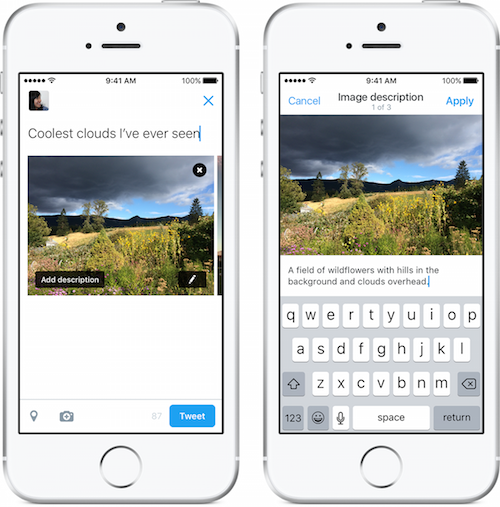A simple adjustment to your Twitter settings can make a big difference for visually impaired users.
An accessibility option lets you add a description to images, making it much easier for voiceover technology to provide important information to those who are visually impaired.
The setting was first released in 2016 and brought back into the spotlight by blind kickboxer Rob Long, whose post about it was retweeted more than 100,000 times in two days. In a rare moment of Twitter kindness, dozens, if not hundreds, of sighted users started enabling the feature.
I’m a blind twitter user. There are a lot of us out there. Increase your ability to reach us and help us interact with your pictures, it’s really simple and makes a huge difference to our twitter experiance allowing us to see your images our way. Thanks for the description
— Rob Long (@_Red_Long) January 3, 2018pic.twitter.com/hCsjoFdmev
There’s no reason not to use the setting. It’s helpful for a lot of people and only takes a few seconds to set up. To enable image description, go to “Settings and Privacy” from the Twitter app or website. From there, select “Accessibility” from the list of options and check the “Compose Image Description” box.

Once it’s enabled, a text box will appear under uploaded images. Select the image thumbnail while you’re drafting a tweet and write an accurate description of the scene in the blank. Unfortunately, descriptions can’t be added to GIFs or videos. The American Foundation for the Blind offers some best practices when describing an image: Keep it brief, be informative, include all words within the picture, add the most important info first, and avoid typos.
So, how exactly does this help the visually impaired? Once your image posts, users who have voiceover enabled can hear your description read aloud along with the tweet. Those little bits of information that take 10 seconds to write are crucial in helping visually impaired users understand an image and will make it much easier for them to interact with you.
Long posted a brief video explaining why this feature is so important to him.
This is how captioning works and why it’s important. Would really appreciate people spreading the word and creating a more accessible twitter for blind users. Thanks
— Rob Long (@_Red_Long) January 3, 2018pic.twitter.com/LMntCuEOqy
There aren’t any drawbacks to using the image description feature. It won’t eat into your precious 280-character limit and the description won’t be visible to anyone who doesn’t have voiceover turned on (unless they hover their cursor over it). In fact, we’d really like to see Twitter enable this feature by default.


